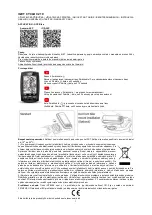
6.3.2.1
Pulse measurements
Pulse measurements include Digital Input (DIN), Frequency (RATE), Pulse Width (WIDTH), Duty Cycle
(DUTY), Phase Delay Between Pulse Inputs (DELAY), Up Counter/Totalizer (COUNT), and Up/Down
Counter/Totalizer (UP/DOWN COUNT). All measurements are derived from signal transitions and an
internal 32.768 kHz time reference. The pulse input signal is read on the Pulse A input (pin 2) and the
reset input signal is read on the Reset input (pin 5). The third input on pin 4 changes its functionality
depending on the pulse measurement type and can be Enable, Direction, or Pulse. When the reset input
is
activated
then the pulse input value is zeroed for all pulse measurement types. When the third input
pin is configured as an enable input and is
deactivated
then the pulse input value is zeroed. Unless
otherwise stated, the third input pin defaults to Enable functionality which must be set HIGH to allow
measurement.
The
Digital Input (DIN)
mode reports the binary value on the DIN pulse input pins. Note the DIN inputs
replace the functionality of the Pulse, Reset, and Enable inputs.
Two measurement modes are used when measuring
Frequency (RATE)
. If the measured frequency is
greater than 100 Hz the total number of pulses/second is used to determine the frequency. If the
measured frequency is less than 100 Hz the time between rising edges is used to calculate the
frequency.
The
Pulse Width (WIDTH)
setting measures the active portion of a periodic signal in msec. The pulse
input may be configured to be active high or active low to measure the positive or negative portion of
the pulse width. See the Input Configuration Diagrams section for details.
Freq = Total Count/second if > 100
counts/second
Freq = 1/pulse period if frequency < 100
counts/second
Pulse Width
Figure 10: Frequency (rate) example
Figure 11: Positive pulse width example
Figure 9: Digital Input example
Digital Value 1
Digital Value 0
1
2
|
P a g e













































